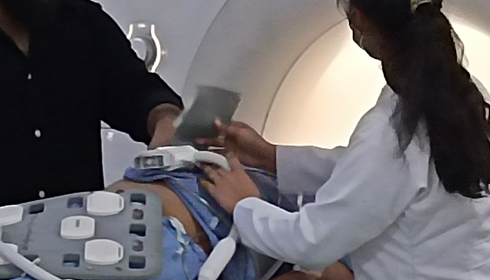
MRI Reveals New Insights on Gluten-Free Diet's Role in Managing Coeliac Disease
Coeliac disease, a chronic disorder that affects approximately one in every 100 individuals globally, has long presented difficulties for patients and researchers alike. While a rigorous gluten-free diet (GFD) remains the only treatment, many people continue to experience gastrointestinal problems. Now, an innovative study from the University of Nottingham, in conjunction with the Quadram Institute, provides new insights into how the condition affects gut physiology and microbiota, as well as how a GFD changes these dynamics over time.
Published in Clinical Gastroenterology and Hepatology, the MARCO study (MAgnetic Resonance Imaging in COeliac Disease) provides important data that could guide the development of future treatments. Using magnetic resonance imaging (MRI) and gut microbiome analysis, researchers investigated how a gluten-free diet affects gut structure, function, and microbial community in coeliac patients.
The study enrolled 36 newly diagnosed coeliac patients and 36 healthy volunteers as control subjects. The researchers took MRI images of the subjects' gastrointestinal tracts and collected blood and stool samples. Over a year, coeliac patients followed a GFD, while the healthy group ate normally.
At first, MRI scans of coeliac patients indicated significant changes in gastrointestinal function compared to healthy people. "Newly diagnosed patients had more gut symptoms, more fluid in the small bowel, and slower food transit times," stated Professor Luca Marciani, main researcher and Professor of Gastrointestinal Imaging at the University of Nottingham.
The microbiota study revealed an imbalance in the gut flora among celiac patients, which included higher amounts of potentially dangerous bacteria like E. coli.
After a year on GFD, participants reported improved gut function, including fewer symptoms, normalized colon water content, and faster meal transit times. However, their measurements were not completely consistent with those of the healthy control group.
Interestingly, the gluten-free diet changed the gut flora in unexpected ways. "We observed a reduction in beneficial bacteria, such as Bifidobacteria, likely due to decreased intake of starch and wheat-based nutrients," Dr. Marciani said.
This dual impact—symptom improvement but a decrease in certain "good bugs"—highlights the complexities of treating coeliac disease.
The MARCO study not only offers light on the physiological changes associated with coeliac disease, but it also suggests potential approaches to enhancing long-term care.
"It was particularly interesting to see how the imaging results on gut function correlated with changes in the colon microbiota," Marciani added. "The findings open the possibility of developing prebiotic treatments to reverse the negative impact of the gluten-free diet on the microbiome."
Dr. Frederick Warren of the Quadram Institute emphasized the collaborative character of the research. "This study combines medical imaging and gut microbiome investigation to deliver valuable information. "It paves the way for future studies that could identify novel approaches to alleviating long-term symptoms in coeliac patients," he explained.
Radiographer Dr. Carolyn Costigan, who completed the patient study as part of her PhD, stated that this study demonstrates the potential of MRI technology to improve our understanding of chronic gastrointestinal diseases.
While the gluten-free diet remains the foundation of celiac disease therapy, the MARCO study emphasizes the need to address its limitations. Researchers may now use improved imaging and microbiome science to investigate new therapeutic options, such as prebiotics, to restore microbial balance and promote gut health.
Professor Marciani summarized: "Despite being a widespread chronic condition, we still don't quite know how coeliac disease affects gut physiology or how the gluten-free diet changes it. This study is a significant step toward closing that gap.